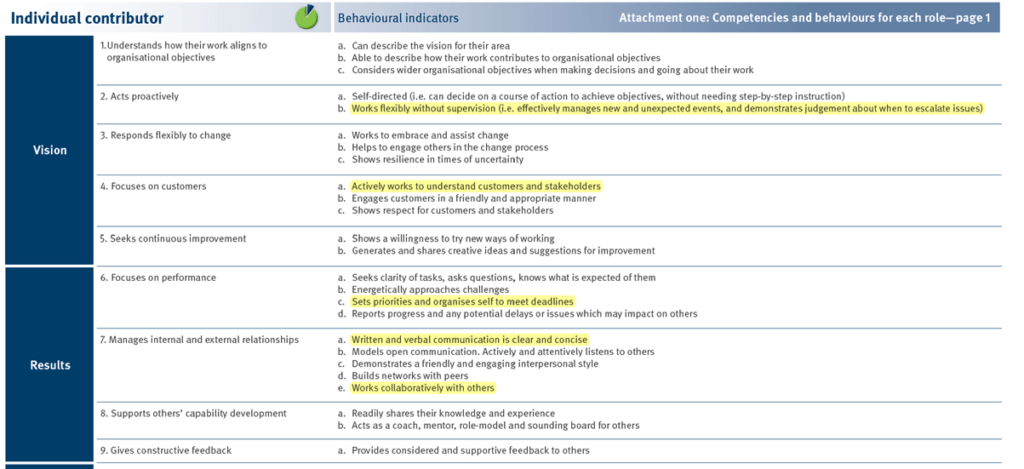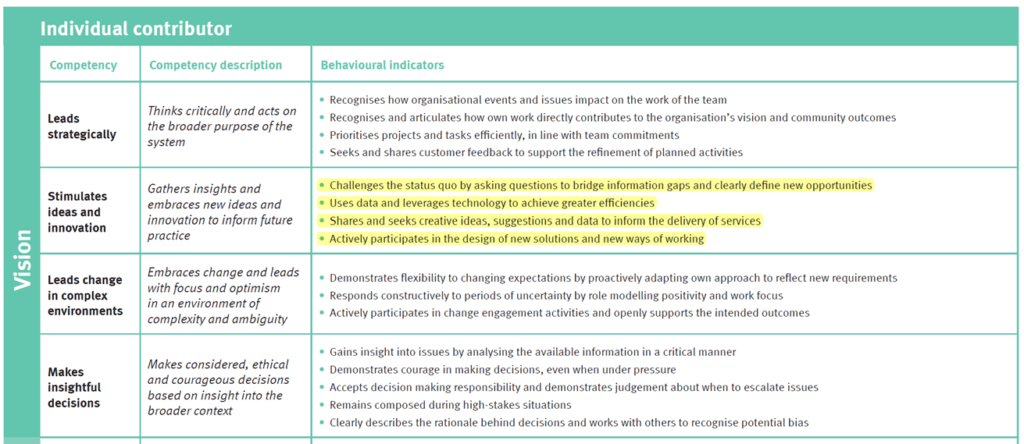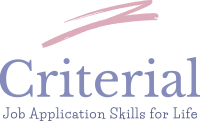On the surface selection criteria competency frameworks are about the most boring sounding blog topic you could ever possibly imagine right?
Possibly yes but the insight you can get from persevering is astounding. For example, did you know the frameworks contain example answers they’re looking for as responses to selection criteria? Actually, for real.
This blog discusses the quite important topic of how government competency frameworks relate to selection criteria, and, responding to them. Whether you’re applying for Queensland Government jobs, a job in the Victorian or NSW public sector or at the Federal Government level, understanding what responses are required to the competency frameworks is a key step in securing an interview.
Templates or Examples?
A strategy some people try to employ to write a response to a selection criteria is to ask for a sample they can follow; like a selection criteria template or selection criteria example. That’s a little like paint by numbers. You can fill in the boxes for that template, but applying that template to a completely different example is like trying to take a paint by numbers flower and make it a beach scene. You actually can’t do that if you didn’t know how to get the numbers on the page in the first place in order to paint them in.
There is also no understanding on the part of the person why they are putting blue where it has the number three and yellow where it has four; other than the fact “it works”. Examples and templates are therefore very limited in terms of application to writing a good response to the criteria you have in front of you.
I discuss templates in this blog, and, I discuss having someone else write your responses in this blog.
So how is using Government selection criteria competency frameworks different?
Selection Criteria Competency Frameworks
Sounds boring hey!
Bet you that you have probably never heard of one much less read one. That’s actually a shame because, especially if you’re from outside the government, you’re missing out. And that doesn’t mean missing out on boring reading that would put even an insomniac to sleep.
What you’re missing out on is the selection criteria template or selection criteria example you might have thought about looking for!
Don’t believe me? Read on and I’ll show you before I do thought I’ll tell you another secret about these frameworks
Competency Frameworks appearing in Selection Criteria
The selection you need to respond to are in most cases literally copy/pasted from the framework document
Don’t believe me again?
I’ll show you – this is a screen capture from a real job advertisement showing the required capabilities for a role:

AND….
This is a screen capture from a real government capability framework [2]

Do you see some similarities? They’re the same. Word for word. Literally, when most position descriptions are written they use the words written in the framework. That’s really useful to you as an applicant because if you read the entire framework, you’d know all the possible questions ahead of time. The other thing is as you apply for more jobs at the same level you are likely to see them repeat. It’s like knowing the exam questions ahead of time.
Behavioural Indicators
These government competency frameworks (yawn) also contain lists of behavioural indicators (YAWN) for each criterion you might have to address. All of those words may have put you to sleep, but they shouldn’t because that’s actually the most exciting thing you’ve read so far. Not only do they tell you the questions in advance, THEY GIVE YOU THE ANSWERS! Don’t believe me again (come on, work with me here)? I’ll show you. This is once again a real competency framework:

The competency area (meaning things you can do) is Stimulates ideas and innovation.
The description (meaning what that thing you can do means) is Gathers insights and embraces new ideas and innovation to inform future practice.
What they want is some who can innovate, be creative, generate ideas and new ways of doing things. Hopefully that makes some more sense not being in government speak:
- Challenges the status quo by asking questions to bridge information gaps and clearly define new opportunities
- Uses data and leverages technology to achieve greater efficiencies
- Shares and seeks creative ideas, suggestions and data to inform the delivery of services
- Actively participates in the design of new solutions and new ways of working
How awesome is that, they’ve told you ahead of time the sorts of things you could talk about that you have done in your experience
How Do I Show Those in my Experience?
To be honest, it is still a little bit paint by numbers, because although you know where the lines are you still need the skills to do it.
It is a skill that once you learn, you can use time and time and time again. The Completing Selection Criteria course will take you through how to build your responses, and as a bonus, if you understand all of this you can skip over the section on government frameworks
The Takeaway
Incredibly boring things can be helpful in ways you never ever imagined.
It’ll take some perseverance, and I wouldn’t recommending trying to do a whole framework at one time.
If you have some spare time though, sit down with the current competency framework in your state and get familiar with it. You don’t need to know it word for word, or memorise it. Get familiar with it so next time you apply for a job, you can come back and study the relevant role and indicators to guide your application.
[1] https://smartjobs.qld.gov.au/jobs/QLD-346767-20
[2] https://www.forgov.qld.gov.au/workforce-capability-success-profile follow the link to download the Workforce Capability Success Profile Framework (PDF, 470 KB)
Share this post
